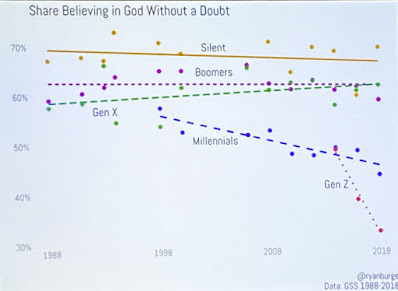Here's the new church Unstuck Church report by Tony Morgan. Here are his findings on the difference between growing and declining churches.
Even though overall attendance at physical gatherings is down 30% year-over-year in the churches that were assessed, there are several churches that are starting to grow again on this side of the pandemic. Of the 102 churches that were surveyed, 35 churches have experienced attendance growth when compared to the previous year.
What’s telling, though, are some of the distinctions between the churches that are growing and those that are still experiencing attendance decline. Here are some of the key differences we identified from the data:
- The majority of growing churches were non-denominational. Declining churches are 40% more likely to be connected to a denomination than growing churches.
- Growing churches have smaller boards and fewer committees than declining churches. Churches that streamline governance also streamline decision-making. That makes it easier for these churches to make changes in ministry strategy when it’s necessary because of the changes happening in the world around us.
- Growing churches have less debt than declining churches. It appears that growing churches are more efficient in how they’re investing Kingdom resources to reach new people.
- Growing churches are baptizing a higher percentage of people than declining churches. In other words, the growth isn’t happening because churches are only swapping Christians. A portion of the growth is coming from more new faith conversions.
- Growing churches are reaching more younger families than declining churches. We know that because kids and students attendance is 28% of total attendance in growing churches and only 22% of total attendance in declining churches.
- Declining churches are more likely to offer multiple styles of worship services. Think combinations of traditional, contemporary, blended, modern and so on. In other words, the more worship styles a church offers, the more likely the church is experiencing a decline in attendance.
- Declining churches have significantly bigger staff teams than growing churches. Declining churches employ 56% more full-time equivalent employees than growing churches.



